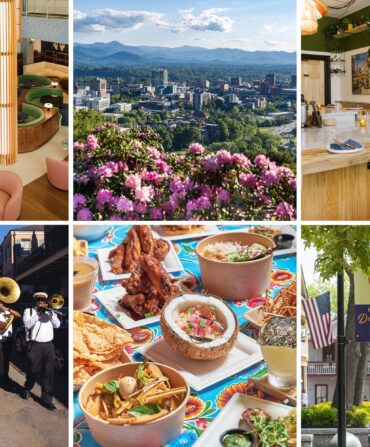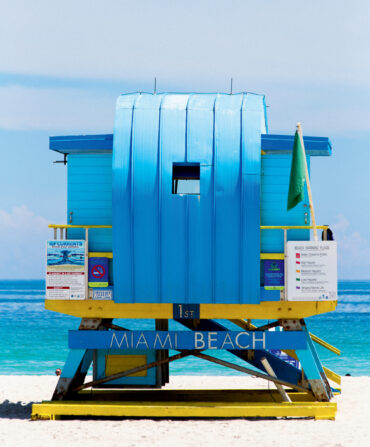For decades, eccentric Southerners who felt out of place in their hometowns but were dead set in staying below the Mason-Dixon Line had essentially one choice: to move to New Orleans, which welcomed idiosyncrasies of every stripe. Today the Crescent City tempts even the more conventional with its walkable (and lively) streets, vibrant nightlife, complicated and evolving food scene, and tropical vibe.
WHY WE LOVE IT
New Orleans is often referred to as the northernmost Caribbean city and for good reason: The town feels apart from the rest of the United States. The pace, the architecture, the food, and the music all strike visitors as slightly out of kilter, sort of familiar but sort of not. Too many people confine their trip chiefly to the French Quarter. That’s a shame. The spirit of New Orleans, after all, can be found throughout its far-flung neighborhoods, which host an eclectic selection of restaurants, nightclubs, and various curiosities.
NEIGHBORHOODS
TO KNOW
The city’s historical kernel, from which all else grew, is the French Quarter, a compact grid about six blocks by twelve hugging the Mississippi River. Over the past century, the backland swamps were drained, and the city expanded toward Lake Pontchartrain, filling out a total of seventy-three neighborhoods such as Mid-City and Lakeview. An efficient way to start an argument between residents is to ask where one neighborhood begins and another ends. Here is how to make the most of just a few of those districts.
The French Quarter
Visitors tend to spend the bulk of their time here, admiring the narrow streets crammed with Creole architecture adorned with cast- and wrought-iron balconies. Royal Street attracts strollers for the street music and antique shops during the day. Stop by Croissant d’Or in the morning for coffee and tasty baked goods in their bonsai-sized courtyard. Café du Monde, with its famed beignets and café au lait, never closes. Come evening, Bourbon Street takes over, where visitors wander, mouths agape, go cups in hand. You can also slake your thirst at Beachbum Berry’s Latitude 29, Peychaud’s, or Manolito, before setting off for a meal. Cane & Table, an outstanding bar with a rum focus, also features a lovely courtyard and an array of delectable Caribbean and Latin-inflected dishes. Jewel of the South, another spot famous for its drinks, is enjoying a rising reputation for its inventive meat-centric fare from English chef Philip Whitmarsh. Not feeling fancy? Enjoy one of the city’s famous po’boys at Killer Poboys, with two locations in the French Quarter.
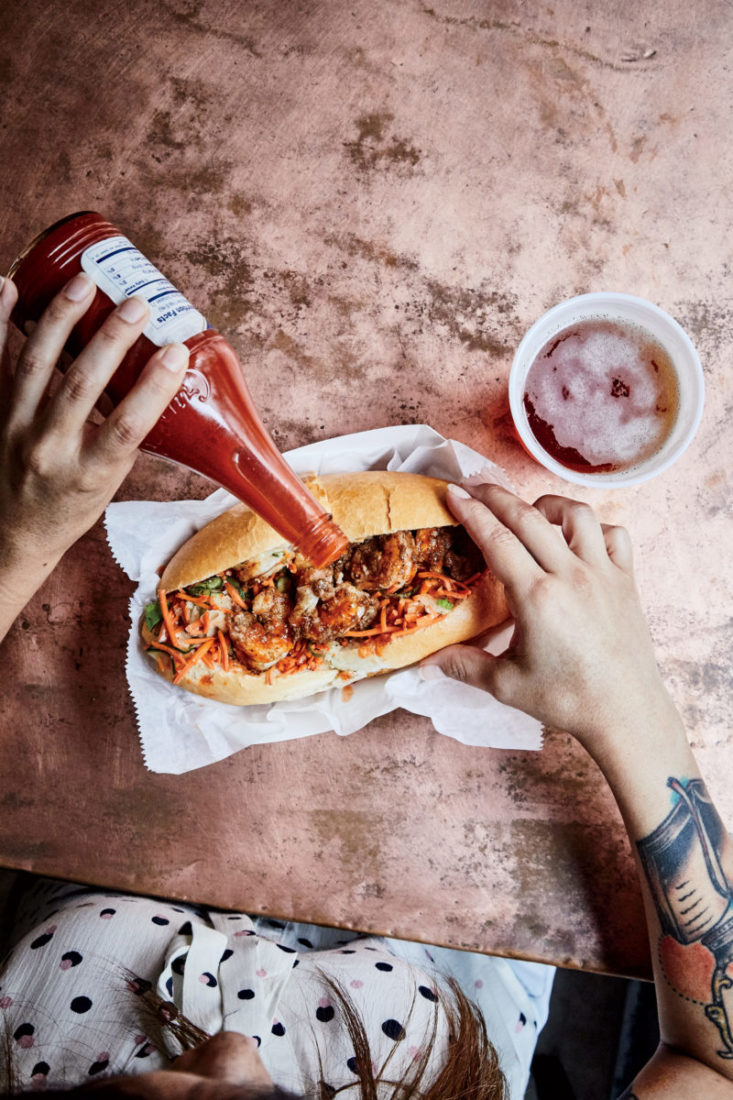
Bywater
About a half-hour’s walk downriver from the French Quarter lies Bywater, a mostly residential neighborhood. Once home to stevedores and ship workers, in recent decades it has attracted musicians, artists, and other creatives who’ve restored the shotgun homes and colorful cottages there. Walk along the Mississippi River through Crescent Park (cross the footbridge at the end of Marigny Street). At the second footbridge, locally called the “Rusty Rainbow,” cross and head into the neighborhood. Nearby is Pizza Delicious, where the name does not lie. If you’re here early in the day, head to Bywater Bakery for delightful scones and more; grab a sidewalk table and watch the neighborhood stroll by. Music Box Village is a Hobbit-like compound of cobbled-together sheds and gazebos, each of which is embedded with musical instruments (think: floorboards as keyboards). It’s often open for exploring and makes for a memorable venue for evening concerts. For dinner, local choices abound, but among the best are Saint-Germain, whose chefs have garnered James Beard Award nominations, with an ever-changing tasting menu featuring elegant local fare, and N7, set in a magical, improbable garden hidden behind a stout gate that brings to mind the South of France. For a more casual option, head to Rosalita’s Backyard Tacos, where you order at the front counter (hint: brisket) and dine on a funky patio out back.
The Garden District
Take the St. Charles streetcar from downtown to Washington Avenue, then spend some time wandering this historic quarter—marked by grand mansions and leafy streets—developed in the nineteenth century during the city’s economic boom times. The elaborate and renowned raised tombs of Lafayette Cemetery No. 1 offer a worthy detour. Across the street lies the culinary landmark Commander’s Palace, where the chefs Paul Prudhomme and Emeril Lagasse both cut their teeth. For extravagant, creative breakfasts or lunches, make your way to Molly’s Rise & Shine on Magazine Street, where fast food meets fine(ish) dining. (This is the sister restaurant to nearby lunch destination Turkey and the Wolf, which offers creative sandwiches—and may make for the meal you remember most.)
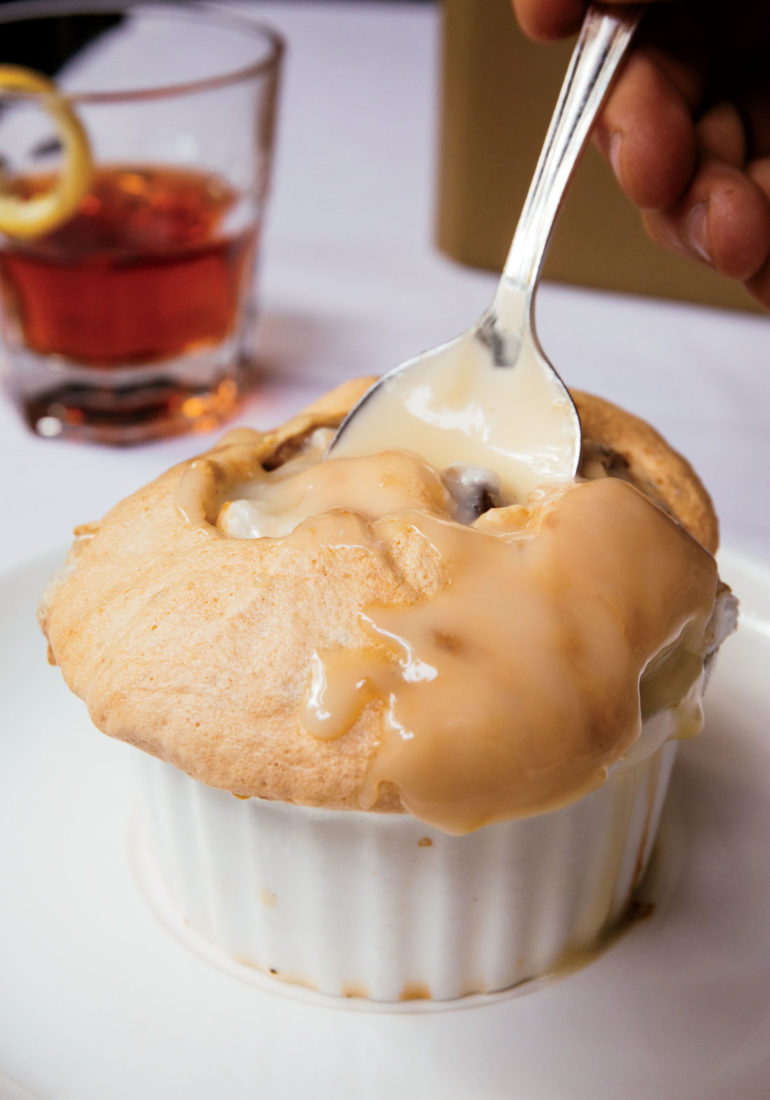
Uptown
Upriver of the Garden District, you’ll find the sprawling Uptown neighborhood, which extends to the crown jewel of the 350-acre Audubon Park. The greenspace features a 1.8-mile jogging path under impressive live oaks that will take you near the city’s famed Audubon Zoo. Magazine Street runs for three miles from the Garden District to the park, passing through a variety of urban ecosystems—stretches of indie boutiques as well as eclectic bars and restaurants. For a picnic in the park, swing by St. James Cheese for a sandwich or a trio of cheeses and a baguette. To craft your own surf-and-turf dinner, stop by Pascal’s Manale for a drink and some fresh oysters at the vintage stand-up oyster bar just inside the front door, then stroll down the block for the onion rings and substantial, sizzling steaks at the casual but exacting Charlie’s Steakhouse.
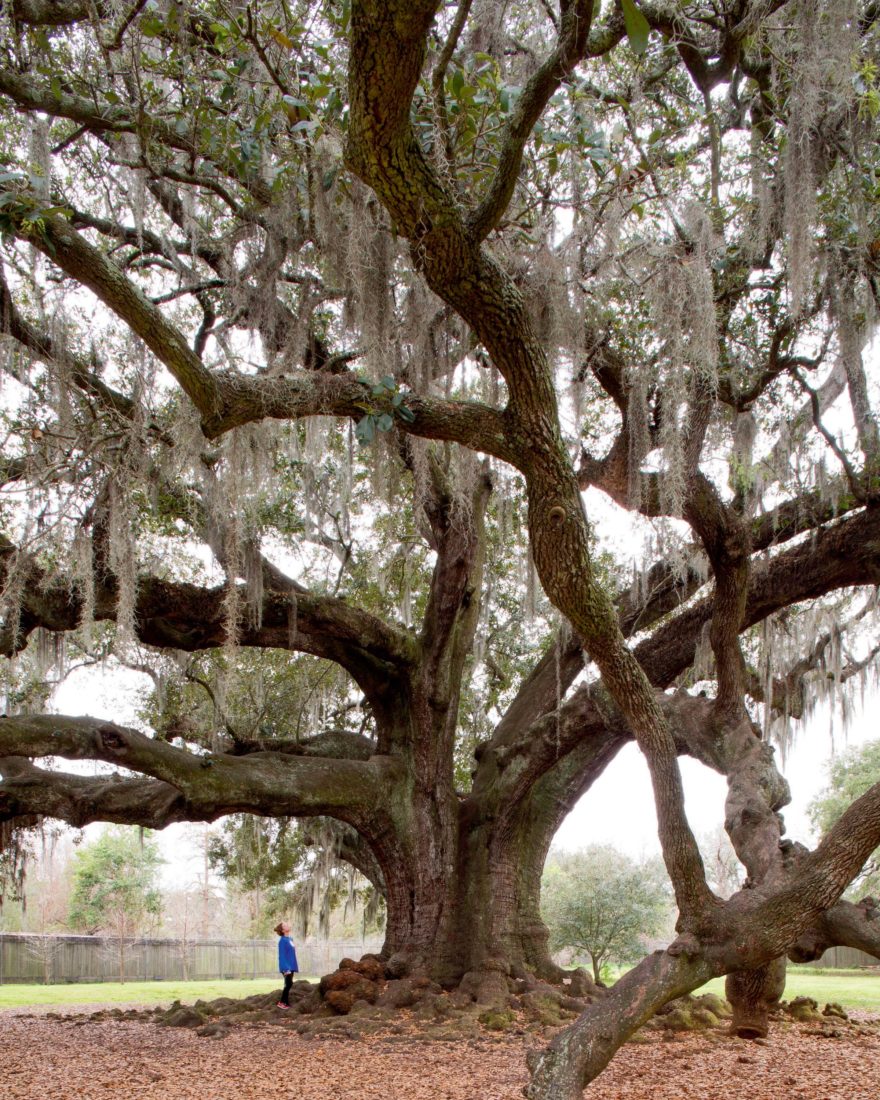
MUST-DO
Chow Down Like a Carnivore
You’re watching what you eat, you say? Cute! While famous for gumbo and jambalaya, city chefs also approach meat as an art form. Pork in its many manifestations is the specialty at Cochon (the sister restaurant to Donald Link’s James Beard darling Pêche). The Company Burger has one location and a million fans, with right-sized delicious burgers that eschew the sky-high fixings. For a local, out-of-the-way gem, seek out Crescent City Steaks, a fly-in-amber classic favored by pols and pop stars.
CLICK HERE FOR MORE CLASSIC NOLA EATS

Tap Your Feet
Music is the lifeblood of New Orleans, with live performances nightly at bars in neighborhoods fancy and not so much. Those without a clear plan should migrate to Frenchmen Street in the Marigny neighborhood, with its stretch of clubs featuring music of every sort along with free-range brass bands that get people dancing in the street. Daytime, a walk down pedestrian-friendly Royal Street yields a mix of sidewalk bands, from roots to rockabilly. For an evening of traditional local jazz, line up for one of the treasured bench seats at Preservation Hall, which has perpetuated a vital slice of New Orleans for two generations.
Elevate Yourself
An eclectic mix of museums and attractions do a splendid job of entertaining while educating. Vue Orleans is an ideal place to get oriented: Downstairs there’s a cutting-edge, interactive introduction to the city’s history and culture; upstairs, an observation deck offers panoramic views of the city from thirty-four stories aloft. The National WWII Museum is a massive, engaging, multibuilding assemblage that focuses on human stories behind the war rather than static armaments. Want to dig deeper into how the city got this way? Swing by the Historic New Orleans Collection for its captivating permanent and rotating exhibits along with an interactive map showcasing French Quarter architecture and history. A ten-minute taxi ride away, the neoclassical New Orleans Museum of Art in City Park boasts outstanding collections and an adjoining world-class sculpture garden, which is free to visit.
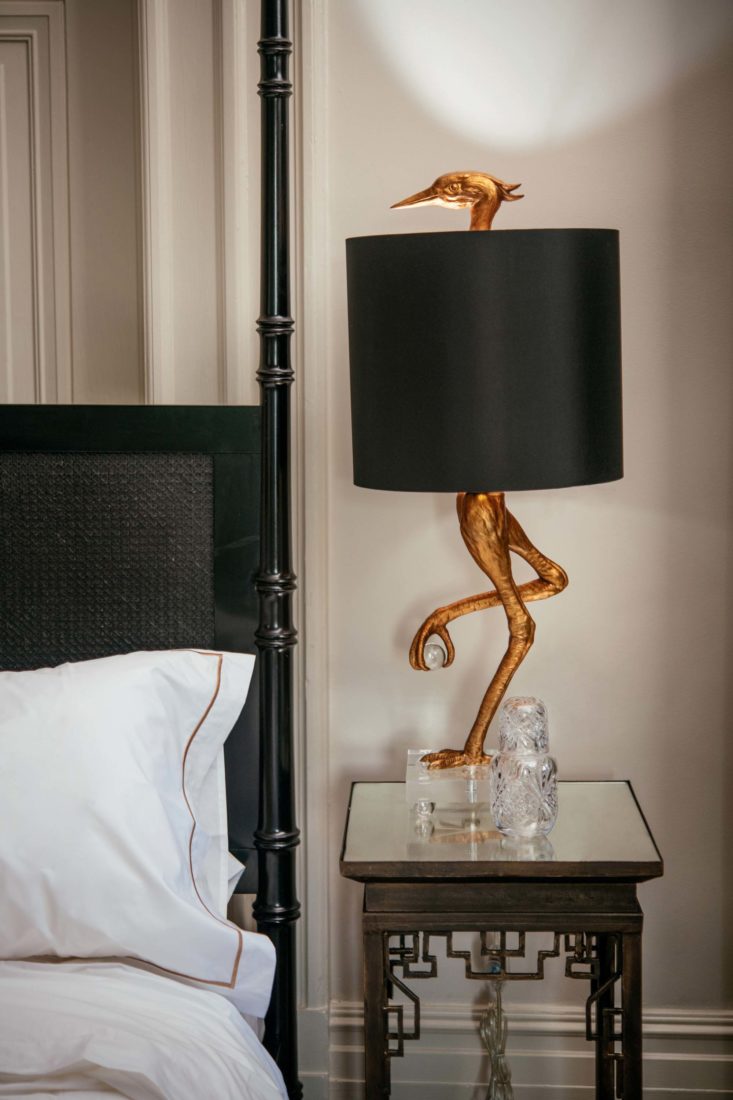
WHERE TO STAY
Uptown elegance and quirky charm inform the Chloe, with fourteen rooms and an inviting pool and bar.The sprawling and elegant Hotel St. Vincent in the Lower Garden District is housed in a former orphanage built in 1861; a similarly antique vibe can be found at the Hotel Peter & Paul, located in a former church complex in the Marigny. The Four Seasons opened in 2021 at the foot of Canal Street in an elegantly converted thirty-four-story riverfront office tower dating to the 1960s. Prefer to stay in the Quarter? Hotel Monteleone, a family-owned classic, has been around for more than a century.
WHEN TO GO
One-third of the year is pretty perfect, weather-wise: October, November, March, April. Days can be mild and dry, and so it should come as no surprise that many of the city’s festivals get staged in these months. And, man, this city loves a festival—it’s a rare weekend when you can’t find a place to celebrate something while indulging in nutritionally questionably food.
Spring
These two are scheduled for the fall this year, due to COVID, but early April is the traditional time for the French Quarter Festival, which fills the Quarter’s streets with music and food. That’s followed by the New Orleans Jazz & Heritage Festival (last weekend of April; first weekend of May), which draws tens of thousands to listen to acts both local and national.
Summer
New Orleans drops into low gear in the summer, which can be sweltry with an almost tactile thickness to the air. Yet celebrations go on. Essence Festival celebrates all things contemporary African American, with motivational speakers by day and top-flight music at night. Tales of the Cocktail in mid-July chiefly serves the international bar industry but offers seminars and events for the cocktail-obsessed consumer as well. Close out the summer with Labor Day weekend festivities at Southern Decadence, a half-century-old celebration of the city’s historic LGBTQ culture.
Fall
The return of cooler weather merits celebration, and festivals start to fill the calendar. Highlights include regional fetes like the Oak Street Po-Boy Festival in October, and November’s Bayou Bacchanal, honoring the city’s historic connection with the Caribbean.
Winter
Winter brings all the weather—from the chilly, damp, and blustery, to sunny spring-like days. The season has embedded within it the crown jewel of New Orleans celebrations: Carnival. Celebrations start on Epiphany (January 6) and culminate in Mardi Gras, in February or March, depending on the moon. Mardi Gras is essentially a confederation of festivals, with Fat Tuesday bringing a citywide series of parties, from resplendent Uptown parades to DIY bacchanals spilling out of the Marigny and into the French Quarter.



